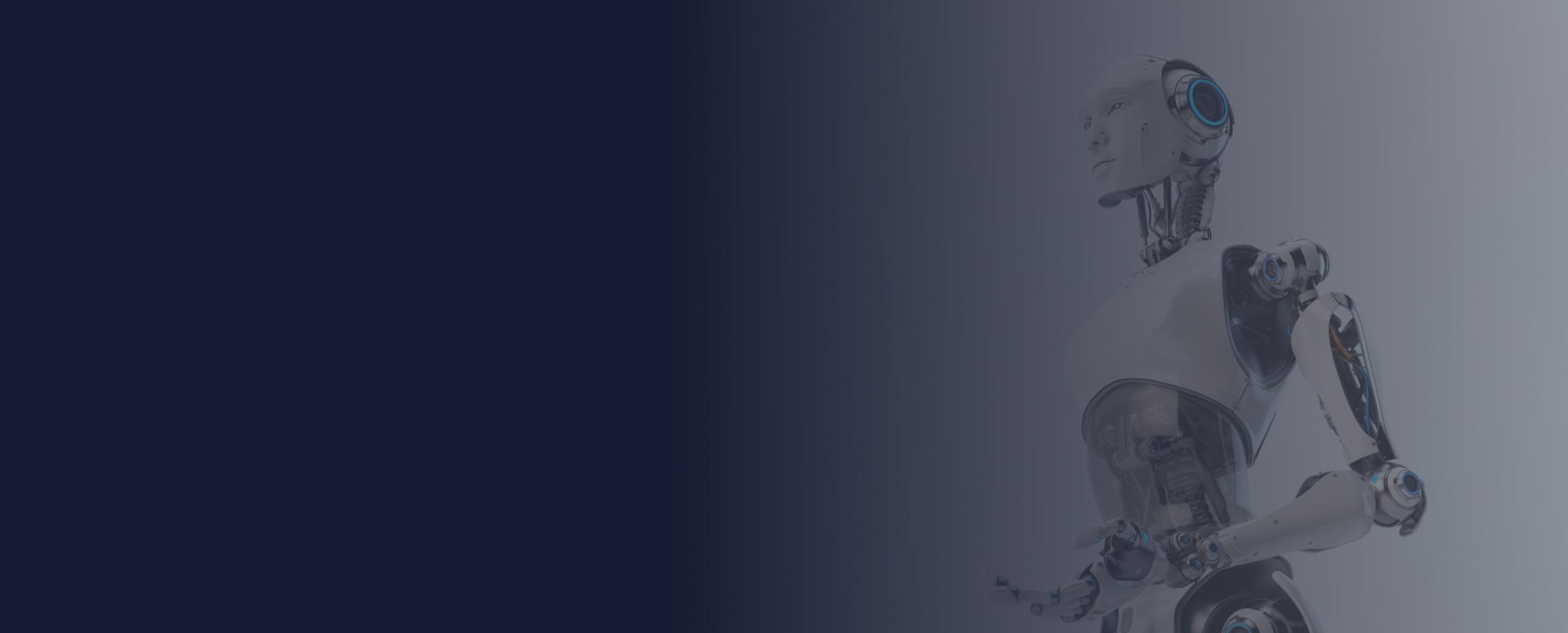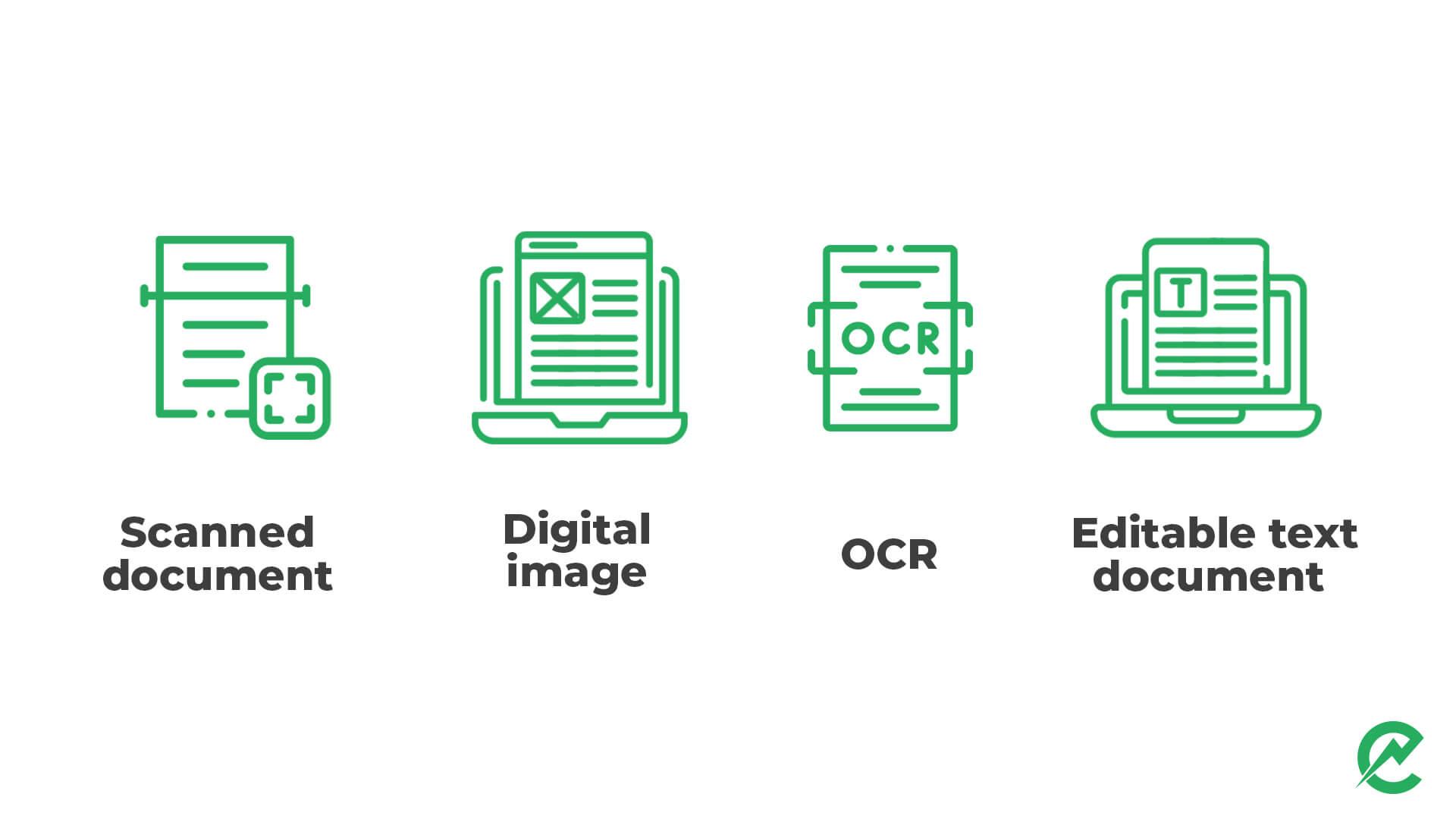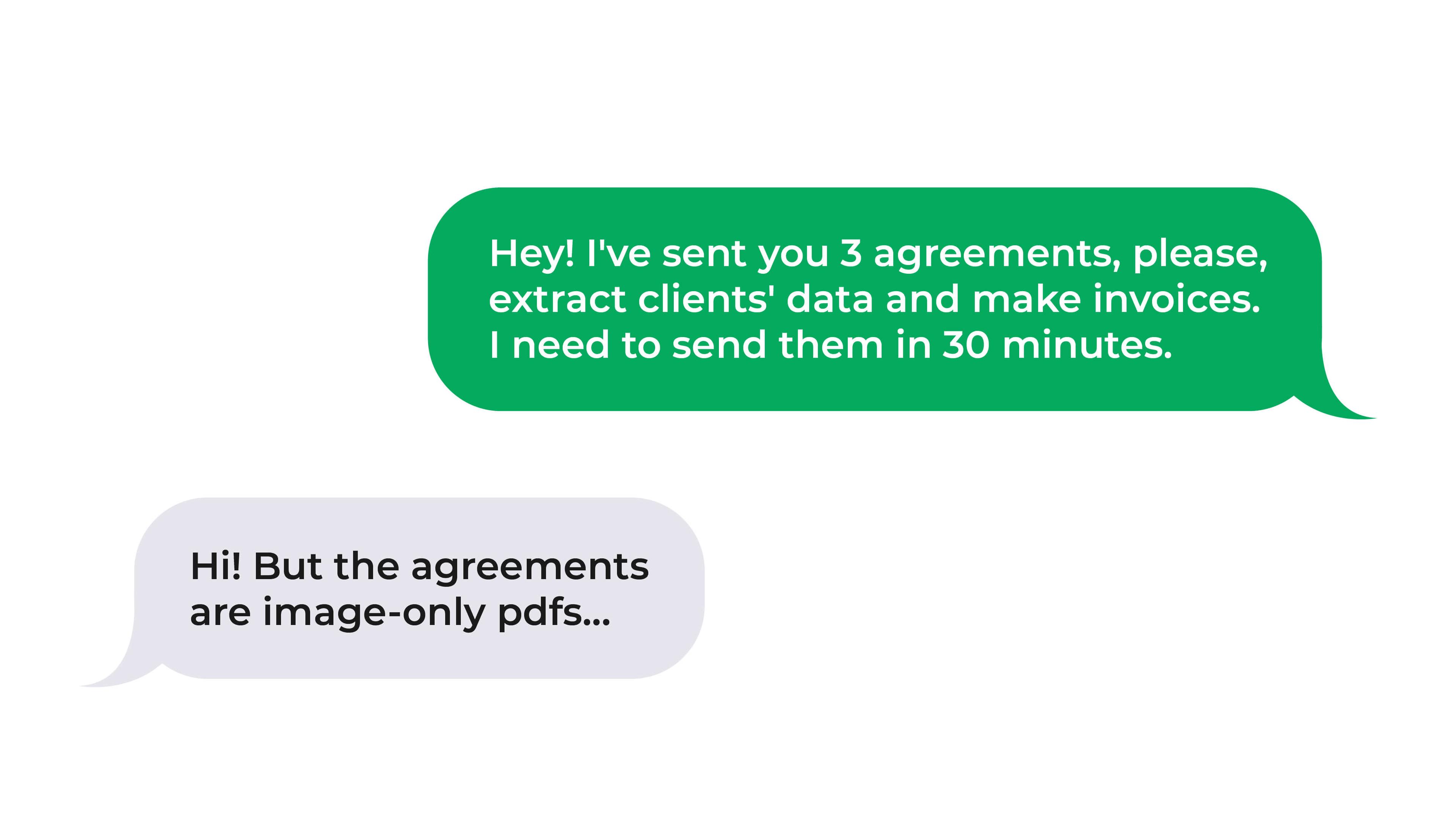
What is OCR or Optical Character Recognition
Let’s explore the basics of OCR technology and its benefits for your clients' digital transformation.
What is OCR?

OCR extracts data from images, scans, and PDFs. Then it converts text into code that a computer can read. OCR scans each document character individually so that you can upload text files instead of messy JPEGs.
Next, we break down the three main points about the process of OCR:
O — Optical
Humans recognize characters with their eyes and brains. The computer uses a scanner camera, which creates a graphic image of the text page. To a computer, there is no difference between a scan of a text document and an image: both are a set of pixels.
C — Character
By characters, we mean any composition of pixels or lines and curves that form the letter. The good thing about the technology: it works both with typed fonts and handwritten letters.
R — Recognition
OCR uses a combination of hard and software. An optical scanner helps make the digital image, and OCR software identifies the letters and puts them into words.
Pattern recognition as an OCR ancestor
This method works by identifying the character as a whole. A line of text is determined by looking for rows of white pixels with rows of black pixels in between. In the same way, we can see where an individual character begins and ends.
Recognition software converts the image file with the characters into a binary matrix: white pixels are 0s, and black pixels are 1s. Then it matches the character with the specific letter of the font.
The next step uses artificial intelligence to enhance OCR accuracy.
How it works
It is easy to transfer words on your computer screen on a physical sheet of paper – click print, and you will have a document in your hands a few moments later.
But going in the opposite direction – moving a scanned paper document into your PC is a bit more complicated. Scanners are not hard to operate, but they make just a digital image of the document and save it to your computer. This image is usually not very crisp due to your scanner's file compression and dust.

But most importantly, you can't edit scanned documents with your favorite word processor. It happens because the scanner doesn't recognize each character.
Here is how the software knows what it is looking at:
But most importantly, you can't edit scanned documents with your favorite word processor. It happens because the scanner doesn't recognize each character.
Here is how the software knows what it is looking at:
- The process of data extraction starts once you upload your document
- The first step is to cut out artifacts so your OCR program can concentrate on the text and nothing else. It attempts to remove dust and graphics.
- OCR software aligns the text correctly and converts any colors or shades of gray in the image to black and white, where black is considered a character and white is a background.
- The next step is to figure out which characters are on the page. Simpler forms of OCR compare each scanned letter pixel by pixel to a font database and decide on the closest match. The smarter OCR breaks down each character into elements like curves and corners. It matches physical features and actual letters.
- Sometimes OCR also uses an in-built dictionary that helps recognize the word and prevent typos.
- A character is identified and converted into an ASCII code that computer systems can use. Before saving for later use, the processed text must be checked for errors and correctness of complex layouts.
Where can OCR be used?
Many companies dealing with text data use this technology in various industries. OCR fits all the departments: finance, sales and marketing, HR, procurement, and legal.

Here's a sample of some of the OCR use cases:
- Scanning printed documents into versions that are edited with text editors.
- Indexing printed material for search engines.
- Automated processing and data entry.
- Transcription of documents into text that is read aloud to visually impaired users.
- Extracting data and transferring it to accounting programs (receipts, invoices).
- Uploading signed legal documents in an electronic database.
- Sorting letters.
- Translating words in an image into a given language.
- Providing search for scanned books.
Hm, and what are the benefits of OCR?
Every business wants to increase productivity with little investment.
You can help your current and potential clients boost the effectiveness of their teams with OCR. Trust us; this technology will enhance your portfolio.
Your clients know productivity decreases when their team must process thousands of paper documents. Documents processing takes time and nerves, especially with PDFs that can't be copied, pasted, or edited.
OCR extracts text from any images or files and edits it.
Any company can start using OCR to reduce manual work, resulting in lower costs and higher profits.
OCR is used with other automation tools for better performance.
Key takeaways
- OCR helps to extract text from any images and files and edit it.
- Any company can start using OCR to reduce the manual work. It will also result in higher income
- OCR can be used with other automation tools for better performance.